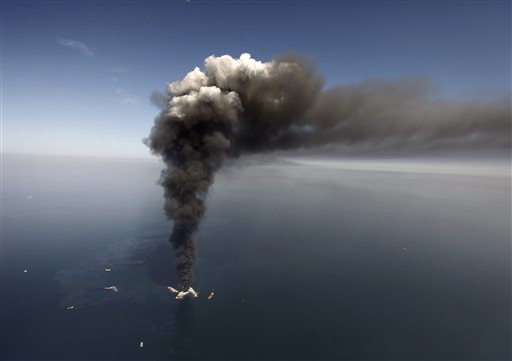WASHINGTON — Dolphins are dying in unusually high numbers. Sea turtle nests are declining. ADVERTISING WASHINGTON — Dolphins are dying in unusually high numbers. Sea turtle nests are declining. Tuna are developing abnormally. And pelicans and gulls are suffering from
WASHINGTON — Dolphins are dying in unusually high numbers. Sea turtle nests are declining.
Tuna are developing abnormally. And pelicans and gulls are suffering from the lasting effects of a massive oil spill in the Gulf of Mexico five years ago, the National Wildlife Federation warned in a report released Monday.
The impact is concentrated in the northern Gulf, but scientists say the long-term damage affects spawning waters for many fish that migrate to South Florida and along the East Coast.
“Wildlife from sperm whales to marsh ants are still feeling the effects of the disaster,” said Ryan Fikes, the environmental group’s Gulf restoration scientist.
The report rounds up research findings on the Deepwater Horizon disaster that spewed millions of gallons of oil into the Gulf in April 2010. The impact, and the research, is ongoing.
A research team spearheaded by scientists at Nova Southeastern University plans to launch another mission in late April or May to study fish, shrimp, squids and microbes in the deep waters of the Gulf. The team got an $8.5 million grant, which is drawn from $500 million provided by BP, the giant oil company that had leased the rig when it exploded, killing 11 workers.
“It’s important we keep looking. Sometimes it takes a long time for these long-term effects on fish populations to show themselves,” said Tracey Sutton, director of the research team.
NSU’s three-year study will help determine the impact of submerged oil and of chemical dispersants used to break up the giant slick. The results have implications for the Atlantic side of Florida because powerful currents bring fish and pollutants through the Florida Straits and north along the coast.
“We know that oil is still below the surface, on the beaches and in the sand,” said Jose Victor Lopez, one of the NSU scientists. “We know that if the sea currents are not in our favor, some of the particles of dispersants could make it over (to the East Coast).”
The National Wildlife Federation, an advocacy group, is pushing for more research on the spill’s lasting effects in the Gulf and beyond. Its report says that:
—Since the spill, about 1,000 bottlenose dolphins have been found dead in an area stretching from the Florida Panhandle to Texas. Dolphins on the Louisiana coast were found dead at four times the historic rates.
—The number of endangered sea turtle nests, which had been increasing rapidly, has declined on average since the spill.
—Exposure to oil has caused abnormal development in many species of fish, including mahi mahi, Gulf killifish and bluefin and yellowfin tuna.
—12 percent of the brown pelicans and 32 percent of the laughing gulls in the northern Gulf may have died as a result of the oil spill.
—2010 and 2011 had the lowest numbers of juvenile red snapper seen in an eastern Gulf fishery since 1994.



